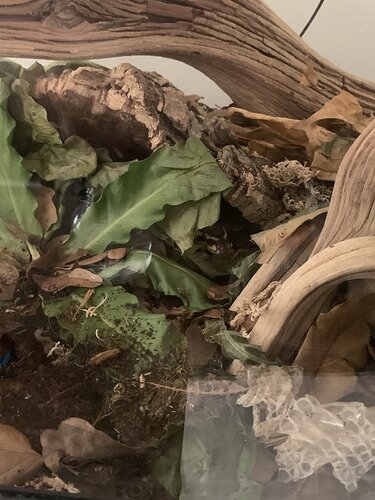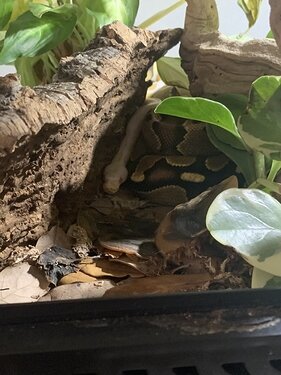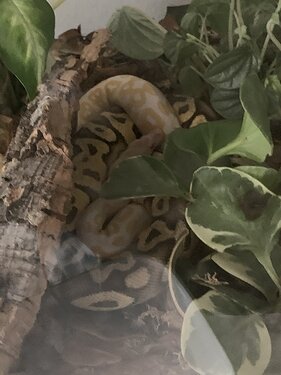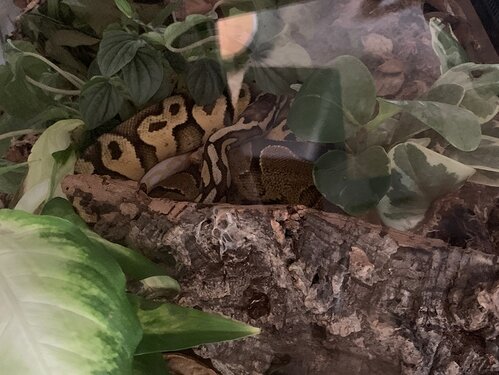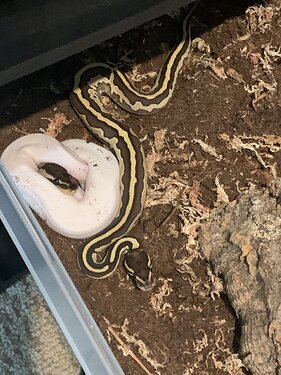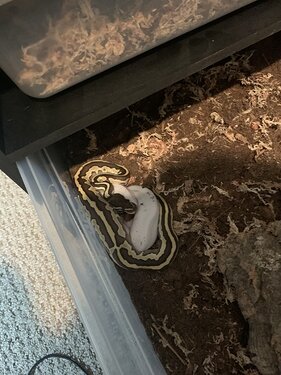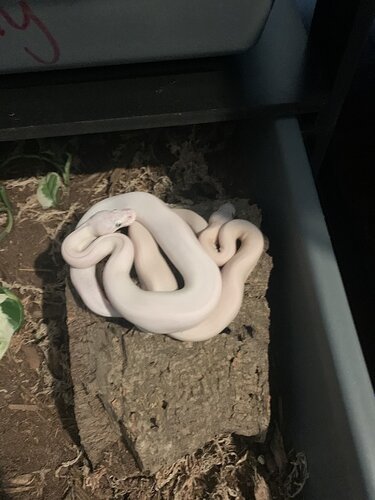I absolutely adored reading through this thread. So much thoughtful discourse on a subject that many can get defensive and even prickly about.
I have relatively low experience with ball python ownership, but I’d love to share observations from the past two months of caring for my brother’s ball pythons (he has had issues with the 5 ball pythons being ‘finicky eaters’ and doesn’t currently have the time to give them adequate, individualised care, so I offered to take them in and rehabilitate as needed.)
I will start off by saying I fall into the category of folks who anthropomorphise reptiles. I have grown up with a sulcata tortoise in our family who I now own, and over the past twenty-three years of growing up with her, I have witnessed activity which suggests that she can recognise distinct individuals and reacts to people differently given her relation to them. My personal opinion is that many people have a form of intellectual snobbery in dismissing intelligence/personality of animals, particularly reptiles. But again, that is all to say that I have my own bias of anthropomorphism.
Observations of my brother’s snakes:
One enclosure that I have set up currently holds a bumblebee and a lesser, both females, both roughly around 6 years old. Both females are small for their age, as my brother has always favoured underfeeding rather than potential overfeeding, although he takes it to an extreme that I disagree with. These two girls have lived together their entire lives, from when they were both very young and brought home from a reptile expo. At night, both are quite active and will come out of the various hides to explore, climb the arboreal elements I’ve added for them, and generally exist out in the open of their cage. I have frequently witnessed one moving from a hide on one side of the tank to the other, and often within a few minutes, the other snake will make the same transit, coiling up in the new hide with her cohabitor. As I’ve only been taking care of them for two months so far, I don’t have an extensive enough experience with their behaviours and temperaments to feel safe in judging whether this is resource hoarding, social comfort, etc. However, both snakes have been doing well together, eating in separate sterilite tubs for their weekly feeding, and exhibiting overall signs of relaxed behaviours.
To contrast that, one of my brother’s BPs, a pinstripe female who is roughly 4 years old, has shown incredible stress over moving from my brother’s individual rack system to a tub-vivarium that I made for her. She is a highly defensive snake, striking and drawing blood every time I interact with her. To clarify, I have not and would not cohabitate her. She showed high levels of stress after the move to my home, and is only now starting to calm down some after a full month with me (my brother requested I take her on a full month after I’d offered to help care for the ‘bonded’, cohabitating couple).
The third example of cohabitation that I am trying to help a snake recover from is my brother’s albino male. He had been kept in a cage permanently with a female common. I also brought him home a month ago and separated him out from the female immediately. He was disconcertingly underweight and sluggish. For his age he is VERY undersized, both in length and girth. Since separating him out, he is beginning to eat consistently on my weekly schedule, only missing one feeding due to being in preshed. I was not able to witness his past interaction with the female he was housed with, although she came to me gravid and my brother had stated she’d been gravid the year prior, but it is clear to see he was mating with her. I can’t say for certain if his startlingly small size is due to energy loss through frequent attempts to mate, stress over cohabitation, my brother’s once a month feeding schedule, or (the very likely) combination of all of the above.
My instincts are that cohabitation depends largely on the individual snakes themselves, but I agree with others who have concerns that lazy or under-prepared snake owners (and I fully admit that having taken on now five ball pythons in the span of the past two months puts me in the latter category) might lean towards cohabitation to save money or time/effort.
Your documentation throughout this thread shows just how deeply you care for your pythons and the effort you are putting into studying how to improve their lives, not just how to save yourself a buck. Again, thank you for this thought provoking thread.



